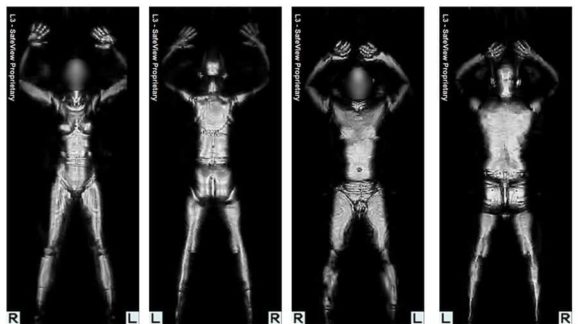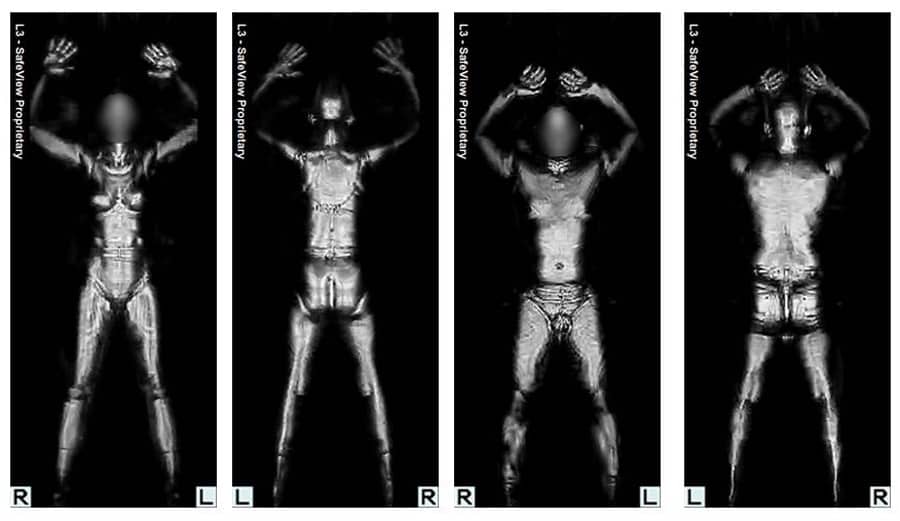CEI Files Opening Brief in TSA Body Scanner Lawsuit

 Yesterday, CEI, The Rutherford Institute, and two CEI employees (VP of Strategy Iain Murray and yours truly) filed our opening brief against the Transportation Security Administration’s (TSA) body scanner regulation, which was promulgated in March 2016. CEI et al. filed suit in May and the litigation can be tracked on CEI’s case page.
Yesterday, CEI, The Rutherford Institute, and two CEI employees (VP of Strategy Iain Murray and yours truly) filed our opening brief against the Transportation Security Administration’s (TSA) body scanner regulation, which was promulgated in March 2016. CEI et al. filed suit in May and the litigation can be tracked on CEI’s case page.
First, some background. In June 2008, TSA first began installing body scanners, formally known as advanced imaging technology (AIT), in U.S. airports. In May 2009, a coalition of privacy groups led by the Electronic Privacy Information Center (EPIC) submitted a petition to Homeland Security Secretary Janet Napolitano requesting that she open a rulemaking as required under the Administrative Procedure Act (APA). In April 2010, the EPIC-led coalition submitted another petition to the Department of Homeland Security requesting that TSA immediately suspend its “purchase, deployment, and operation” of body scanners, arguing that the use of the scanners violates the APA, Religious Freedom Restoration Act (RFRA), the Privacy Act, and the Fourth Amendment.
In July 2010, EPIC filed suit making those arguments. In July 2011, the U.S. Court of Appeals for the D.C. Circuit rejected EPIC’s RFRA, Privacy Act, and Fourth Amendment arguments, but found that TSA violated the APA by failing to conduct a notice-and-comment rulemaking prior to deploying AIT machines in airports. The court ordered TSA to “promptly” produce a formal rule on its use of AIT. A year and two days later, EPIC filed a petition for writ of mandamus to enforce the court’s mandate that TSA open a rulemaking proceeding. CEI submitted a “friend of the court” amicus brief in support of EPIC’s mandamus petition, which was joined by seven other organizations and former American Airlines CEO Bob Crandall. In September 2012, the court denied EPIC’s mandamus petition, but notes that it “expect[s] that the NPRM will be published before the end of March 2013.”
A few days before the court-imposed deadline of “the end of March 2013,” TSA published a notice of proposed rulemaking, proposing to add two sentences to 49 C.F.R. § 1540.107 to note that the agency may use “advanced imaging technology,” defined as “screening technology used to detect concealed anomalies without requiring physical contact with the individual being screened.” In June 2013, CEI and Bob Crandall filed comments with TSA in its proceeding regarding the use of body scanners. We argue that TSA’s proposed rule falls far short of what the APA requires, as it does not give passengers fair notice of their airport screening obligations, and that the agency has failed to justify its proposed rule on risk-based, cost-benefit grounds, including the failure of TSA to account for potential additional air/road modal substitution fatalities (more on this below).
In July 2015, exactly four years after the court ordered TSA to “promptly” produce a rule and more than two years after the closure of the proposed rule’s comment period, CEI, National Center for Transgender Equality, The Rutherford Institute, Lawson Bader, and Marc Scribner filed a petition for writ of mandamus asking the D.C. Circuit to enforce its 2011 mandate and order TSA to produce a final rule within 90 days. In October 2015, the D.C. Circuit ordered TSA to produce “a schedule for the expeditious issuance of a final rule within a reasonable time.” TSA stated in its response to the D.C. Circuit’s October order that “the final rule will be published in the Federal Register by March 3, 2016,” precisely the date it eventually published it.
In our opening brief, we argue that TSA’s final rule violates the APA by arbitrarily failing to consider potential air/road modal substitution due to passengers being turned off by TSA’s intrusive body scanners. Given that road transport is far more dangerous than commercial air travel, one would expect some number of people who opt to drive rather than fly would wind up dying in car accidents.
Indeed, based on an analysis of comments submitted in response to TSA’s 2013 proposed rule, we estimate the effect of modal substitution and find the number of additional highway fatalities to greatly exceed TSA’s own estimates of how many lives are saved by its deployment of AIT machines.
Cornell University economists Garrick Blalock, Vrinda Kadiyali, and Daniel H. Simon published two studies on the impact of 9/11 and post-9/11 security procedures on the demand for air travel and modal choice. One finding of their research was that for every 1 million decline in airline passenger enplanements, 15 additional highway fatalities were generated.
While TSA failed to do any analysis of the modal substitution question, I used the comment record of the proposed rule to extrapolate a rough national modal substitution effect. Based on my review of the record, approximately 1.5 percent of commenters (1.47854 percent) explicitly stated they have or plan to drive rather than fly in order to avoid the indignities of TSA’s AIT-based primary screening.
According to the Bureau of Transportation Statistics, there were 816,763,000 scheduled passenger enplanements in the year ending June 2016, the most recent available data. Assuming TSA’s use of AIT led to a reduction in enplanements of 1.47854 percent, this means 829,020,398 enplanements would have taken place in the absence of the objectionable AIT machines, a difference of 12,257,398 enplanements. If a reduction of one million enplanements leads to 15 additional highway fatalities, modal substitution arising from public opposition to AIT machines can be said to cause 184 additional annual road deaths.
In contrast, TSA’s break-even analysis assumes the machines would be cost-effective if they save between 20 and 21 lives per year under a variety of scenarios (see Table 57 on p. 138 of the final rule’s Regulatory Impact Analysis). This means that even if the ≈1.5 percent modal substitution figure was overestimated by a factor of eight, the additional modal substitution road fatalities would still exceed the life-saving estimates contained in TSA’s break-even analysis.
As this suggests TSA policies may be killing far more people than even the agency itself claims it must save in order to justify the AIT machines, we hope the court agrees with us and orders TSA to properly account for the potential deadly impact of body scanners, an “important aspect of the problem” required to be considered under the Administrative Procedure Act.